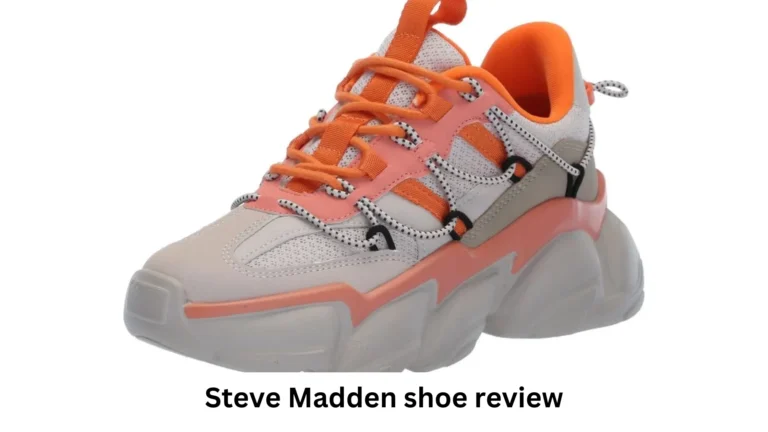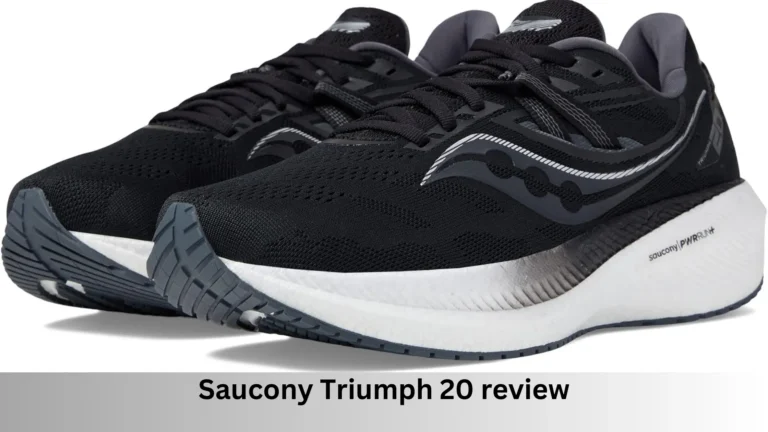
Reformation, a brand known for its sustainable and stylish clothing, has quickly become a favorite among eco-conscious fashionistas. While its garments receive glowing reviews for their design and ethics, there’s an ongoing debate surrounding Reformation’s shoes. One of the most frequently asked questions is: Do Reformation shoes run small?
In this guide, we’ll provide an in-depth look into the sizing of Reformation shoes. We’ll dive into customer feedback, expert opinions, and an analysis of how to choose the right size, especially when shopping online. By the end of this article, you’ll have a clear understanding of whether Reformation shoes run small and how to make the best shoe size decision for your next purchase.
The Rise of Reformation Footwear
Before we dive into the sizing, it’s essential to understand what sets Reformation shoes apart. Founded in 2009, Reformation quickly became known for its minimalist, chic designs and commitment to sustainability. In 2019, the brand expanded into footwear, creating shoes that are just as eco-friendly and fashion-forward as their clothing lines.
Reformation’s footwear collection includes sandals, boots, heels, flats, and sneakers, crafted using environmentally conscious materials like recycled rubber, vegetable-tanned leather, and eco-suede. The footwear line also focuses on timeless designs, often inspired by vintage aesthetics.
While Reformation’s sustainability goals are clear, what hasn’t always been as transparent is their sizing — particularly whether their shoes tend to run small, large, or true to size.

The Big Question: Do Reformation Shoes Run Small?
The short answer to this question is: it depends. Based on extensive customer feedback and reviews, the consensus is that Reformation shoes often run slightly small. However, this isn’t a blanket statement for every shoe style they offer. Several factors can affect whether a pair of Reformation shoes feels true to size, tight, or roomy, including the shoe’s material, style, and individual foot shape.
Customer Reviews: A Mixed Bag
Customer feedback on sizing can vary, but a significant portion of reviewers note that Reformation shoes run on the smaller side, particularly in closed-toe styles. For example, many customers report that Reformation heels and boots often feel tight, especially around the toes. This is likely due to the structured nature of these designs and the materials used, such as rigid leather.
Open-toe designs like sandals and strappy heels, however, are more likely to fit true to size, given the extra room for the toes and a more flexible fit. Still, some shoppers have recommended going up a half size, especially if you have wider feet or if you’re between sizes.
Factors That Affect Reformation Shoe Sizing
a. Shoe Style
Different shoe styles can fit differently, even if they’re from the same brand. Here’s how sizing typically breaks down across different Reformation shoe styles:
- Heels and Boots: These tend to run smaller due to their more structured designs. Many customers recommend sizing up, especially if you have wider feet.
- Flats: Flats are a bit more forgiving, but still, some users report a snug fit. Opting for a half size larger could provide more comfort, especially during extended wear.
- Sandals and Open-toe Shoes: These typically fit true to size, as the open design offers more flexibility. However, those with wider feet might still want to consider sizing up for added comfort.
- Sneakers: Reformation’s sneakers tend to run small as well. If you plan to wear thicker socks, definitely consider going up a half size.
b. Materials Used
Reformation uses high-quality, sustainable materials in their footwear, including recycled rubber, leather, and eco-friendly suedes. While these materials are fantastic for sustainability, they can sometimes lack the stretchiness of synthetic alternatives.
- Leather Shoes: Reformation leather shoes are known to run smaller due to the rigid nature of vegetable-tanned leather. While the material will eventually mold to your foot, the break-in period can be uncomfortable if the shoe is too small initially.
- Recycled Materials: The reformation’s commitment to using recycled materials can also affect sizing. Some of these materials may have less give than traditional shoe-making materials, leading to a tighter fit.
c. Foot Shape
Every foot is unique, and your specific foot shape will influence how any pair of shoes fits. Here’s what to keep in mind:
- Wide Feet: If you have wide feet, you may find Reformation shoes too snug. In this case, sizing up is usually a good idea, especially for closed-toe designs like boots and flats.
- Narrow Feet: If you have narrow feet, Reformation shoes might fit you perfectly, even if others find them tight.
- High Arches: Those with high arches may experience discomfort in certain styles, particularly in shoes without adequate arch support, like flats and sandals. You may need to size up to accommodate your foot height comfortably.
A Guide to Finding the Right Size
When shopping for Reformation shoes, especially if you’re buying online and can’t try them on beforehand, there are a few strategies to ensure you pick the right size:
a. Read Reviews Thoroughly
Customer reviews are your best friend when it comes to determining the fit of Reformation shoes. Pay attention to feedback from people who share your foot type, whether that’s narrow, wide, or somewhere in between. Also, note any recurring comments about sizing up or down for specific styles.
b. Use Reformation’s Size Guide
Reformation offers a detailed size guide on their website for each shoe style. Measuring your foot length and comparing it to their size chart is a simple yet effective way to find the right fit. Keep in mind that if you’re between sizes, going up a half size might provide the extra comfort you need.
c. Consider the Style and Material
As mentioned earlier, different materials and styles will fit differently. If you’re purchasing leather boots, for example, remember that they will likely run small initially and might need time to break in. If you’re not willing to endure a break-in period, sizing up could save you from discomfort.
d. Shop with Free Returns
If you’re unsure about the size, one of the best ways to mitigate the risk is by purchasing from retailers that offer free returns. Many online shops provide generous return policies, allowing you to try on the shoes at home and send them back if they don’t fit.

Breaking in Your Reformation Shoes
If you’ve decided to stick with your usual size and find that your Reformation shoes are a bit snug, don’t worry! There are several ways to break them in and make them more comfortable over time.
a. Use Shoe Stretchers
Shoe stretchers can help widen the toe box and add a little extra room. This is especially useful for leather shoes that might need some time to mold to your feet.
b. Wear Thick Socks Around the House
If your shoes feel tight, wearing thick socks and walking around your home in them can help stretch them out. Over time, the shoes will begin to adapt to your foot shape.
c. Visit a Professional Shoe Repair Shop
For especially tight shoes, a cobbler or shoe repair professional can stretch them for you. They have specialized tools that can safely widen the shoes without damaging them.
6. Reformation’s Sustainability and Sizing Impact
It’s worth noting that Reformation’s commitment to sustainability could play a role in their sizing. The use of eco-friendly materials, which are sometimes less flexible than their traditional counterparts, might contribute to the tighter fit of some styles.
While this might mean a snugger fit at first, many of these materials, like vegetable-tanned leather, will stretch and mold to your feet over time. Additionally, Reformation’s eco-conscious ethos means that their shoes are designed to last, so even if they take some time to break in, you can expect them to be durable and long-lasting.
A Comparative Look: How Reformation Shoes Compare to Other Brands
To give you a better sense of how Reformation shoes fit compared to other popular brands, let’s compare them to similar footwear lines:
- Everlane: Like Reformation, Everlane is known for its ethical approach to fashion. However, many customers find that Everlane shoes are more true to size compared to Reformation’s smaller fit.
- Allbirds: Allbirds shoes tend to run slightly large, especially in their sneaker range, making them the opposite of Reformation’s snug sizing.
- Madewell: Madewell’s shoes, especially their boots, are often compared to Reformation’s in terms of style and fit. However, Madewell’s shoes typically offer a more consistent true-to-size fit.
The Final Verdict: Should You Size Up in Reformation Shoes?
So, do Reformation shoes run small? Based on customer reviews, style, material, and expert feedback, the answer is yes — in many cases, Reformation shoes do tend to run small, particularly in structured styles like heels and boots. However, open-toe styles and sandals are more likely to fit true to size, while some sneakers also run small.
If you have wider feet, sizing up is highly recommended, especially for closed-toe designs. If you’re in between sizes, going up half a size can make a big difference in comfort.
Also Read: Are Running Shoes Better for Your Feet?
Summary of Key Points:
- Heels, Boots, and Flats: Generally run small; size up for a more comfortable fit.
- Sandals and Open-toe Shoes: Usually fit true to size but may run small if you have wider feet.
- Sneakers: Tend to run small; consider sizing up.
- Material Matters: Leather and eco-friendly materials may feel tight at first but will stretch over time.
When in doubt, consult the reviews, use the size guide, and consider purchasing from a retailer with a flexible return policy. With these tips, you’ll be able to confidently navigate Reformation’s sizing and find the perfect pair of eco-friendly, stylish shoes.

Hello, I am Natasha Rose. I am the founder of the website Best Running Shoes. I am from California, USA. I am a professional shoe analyzer and an employee in a shoe showroom. I like to provide information about all types of shoes.





